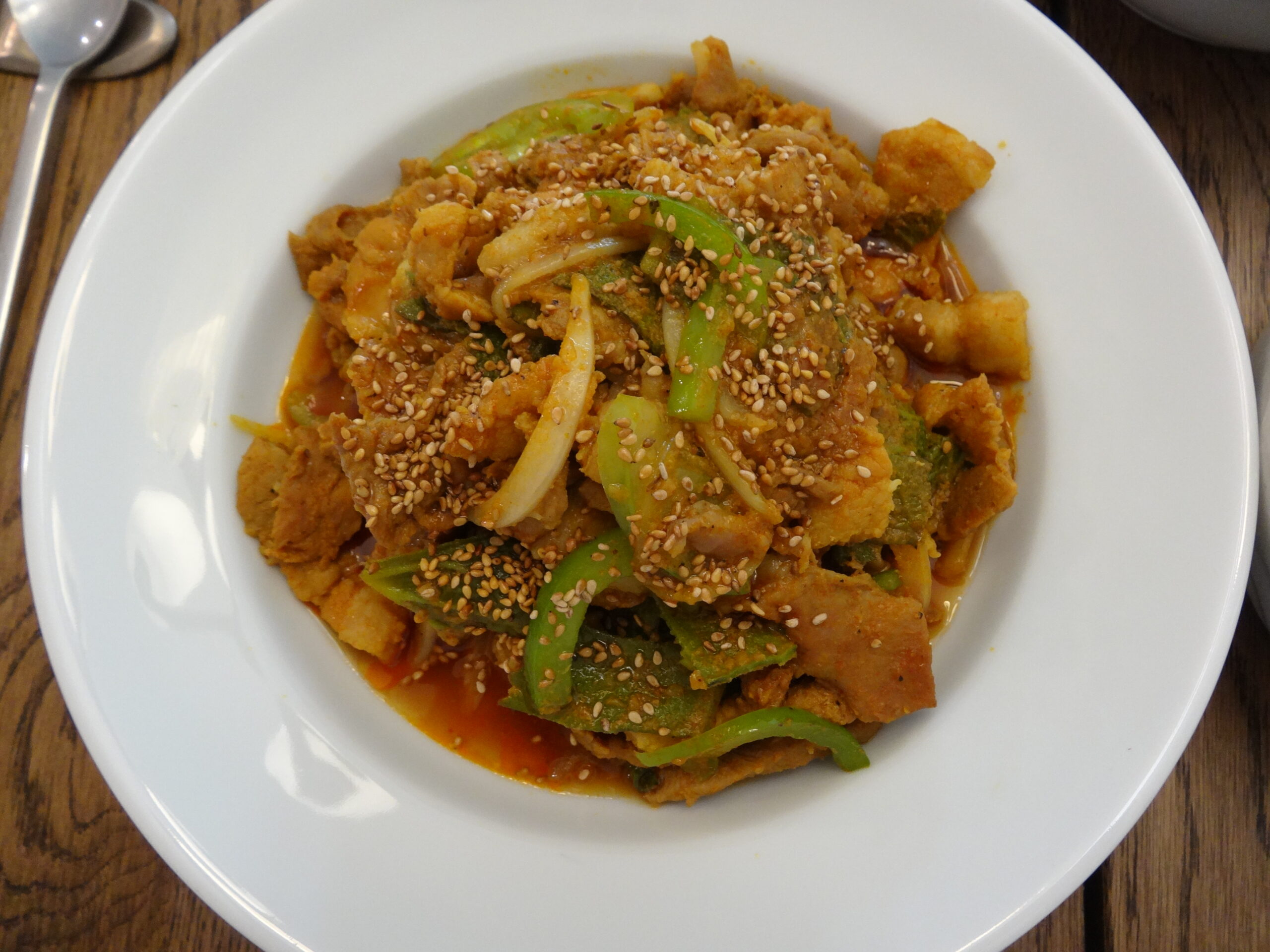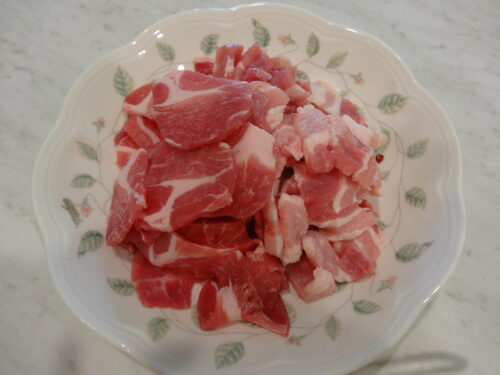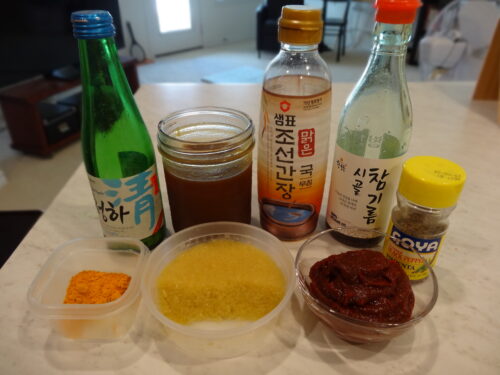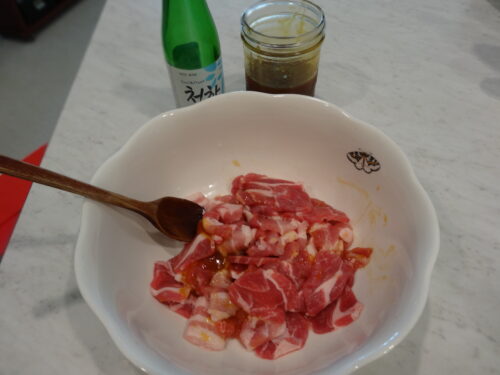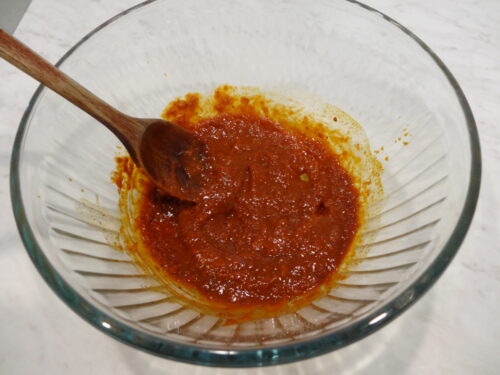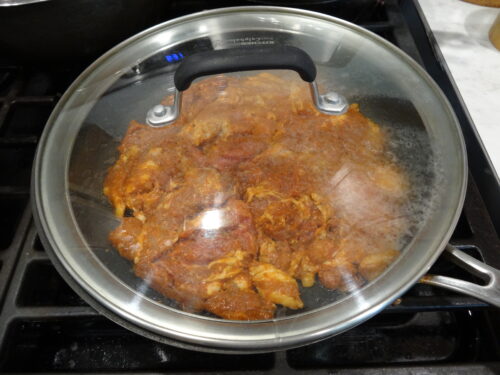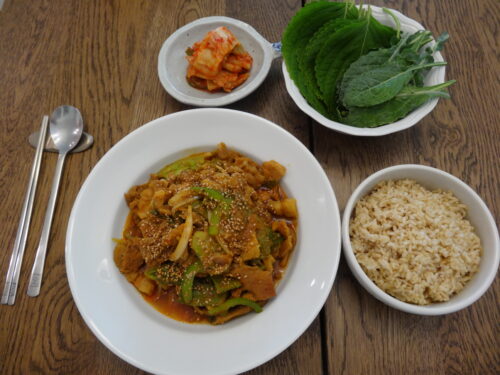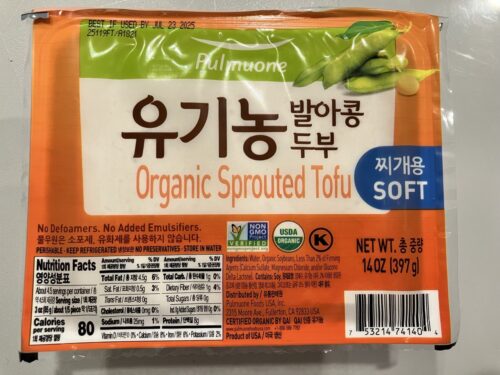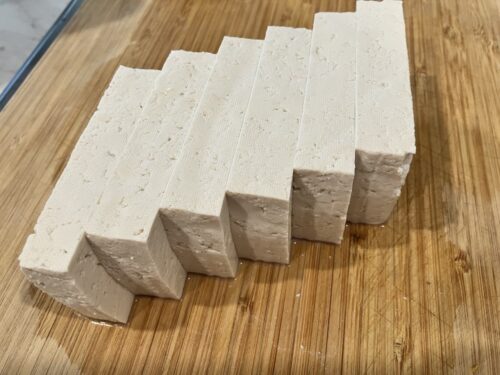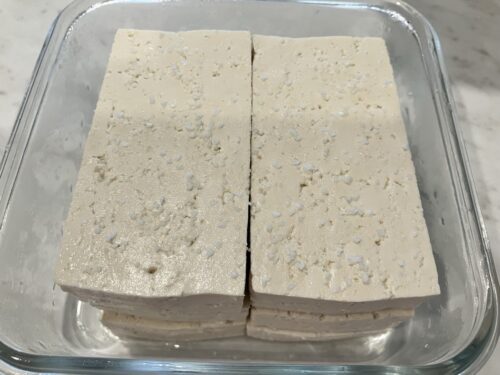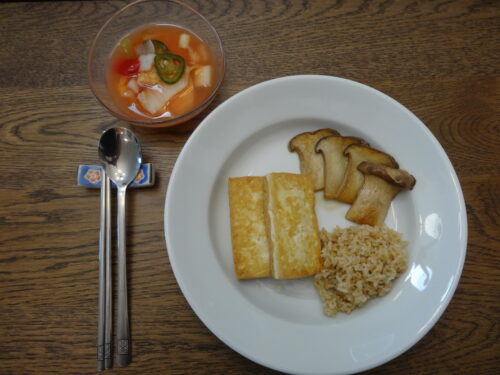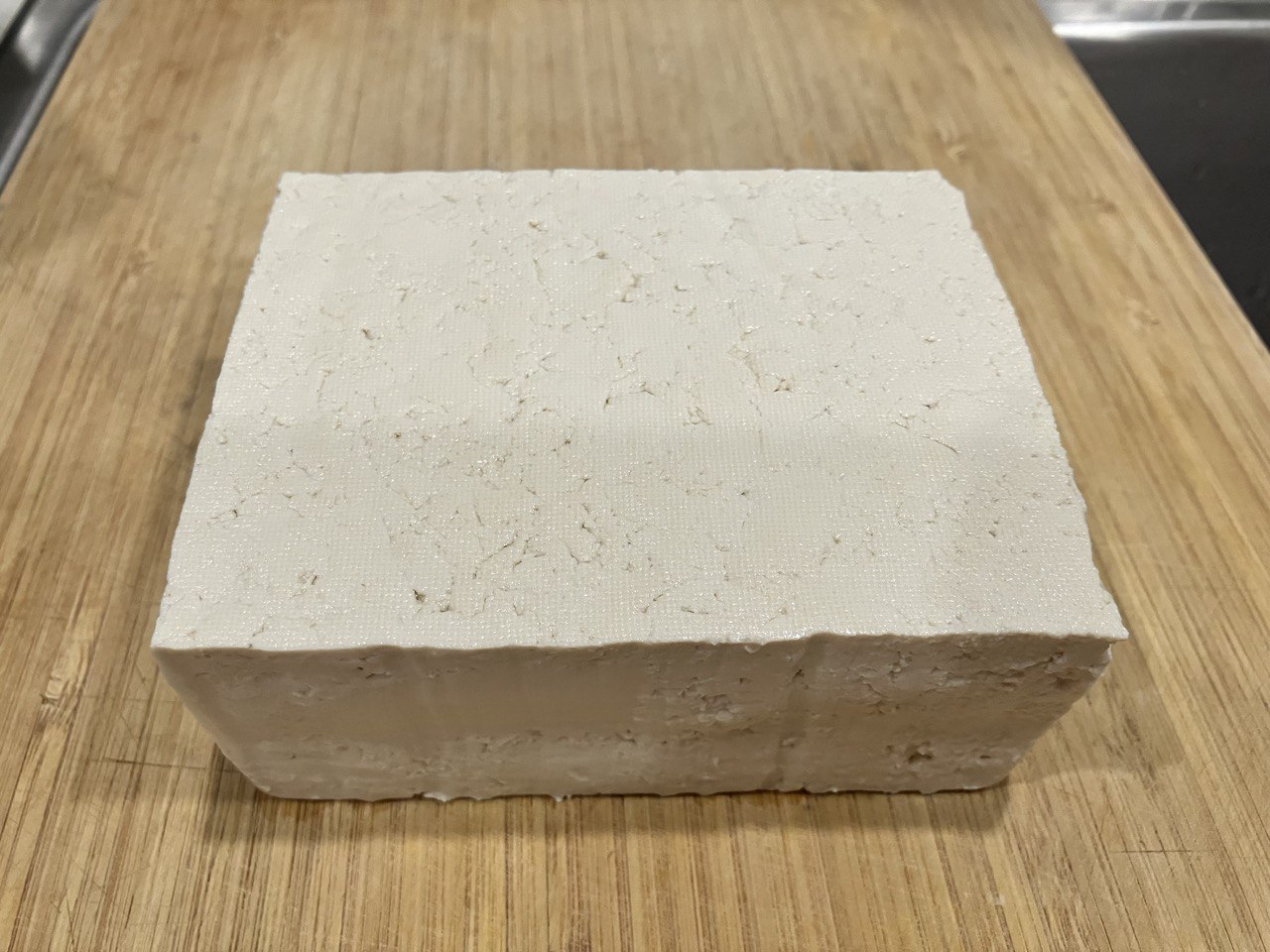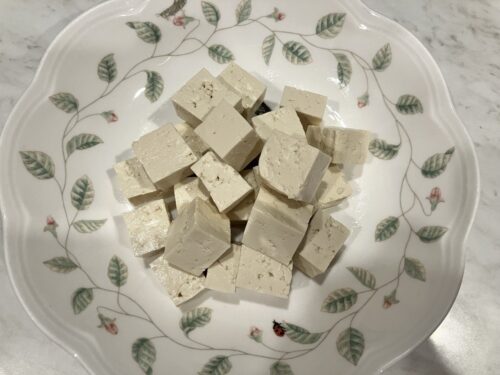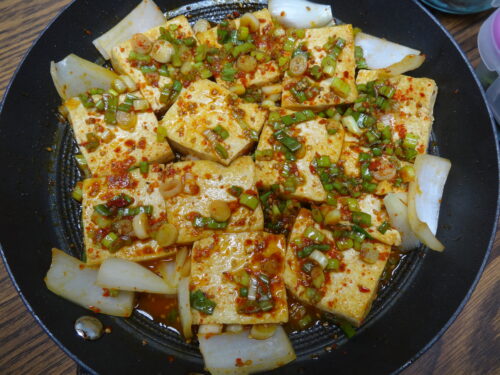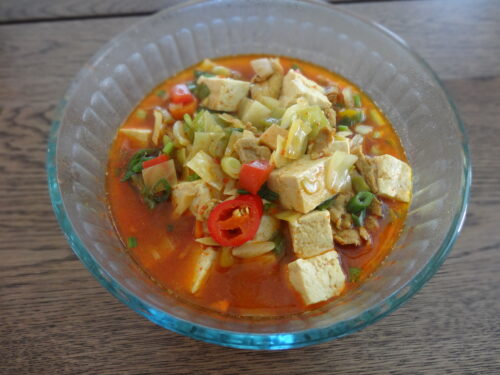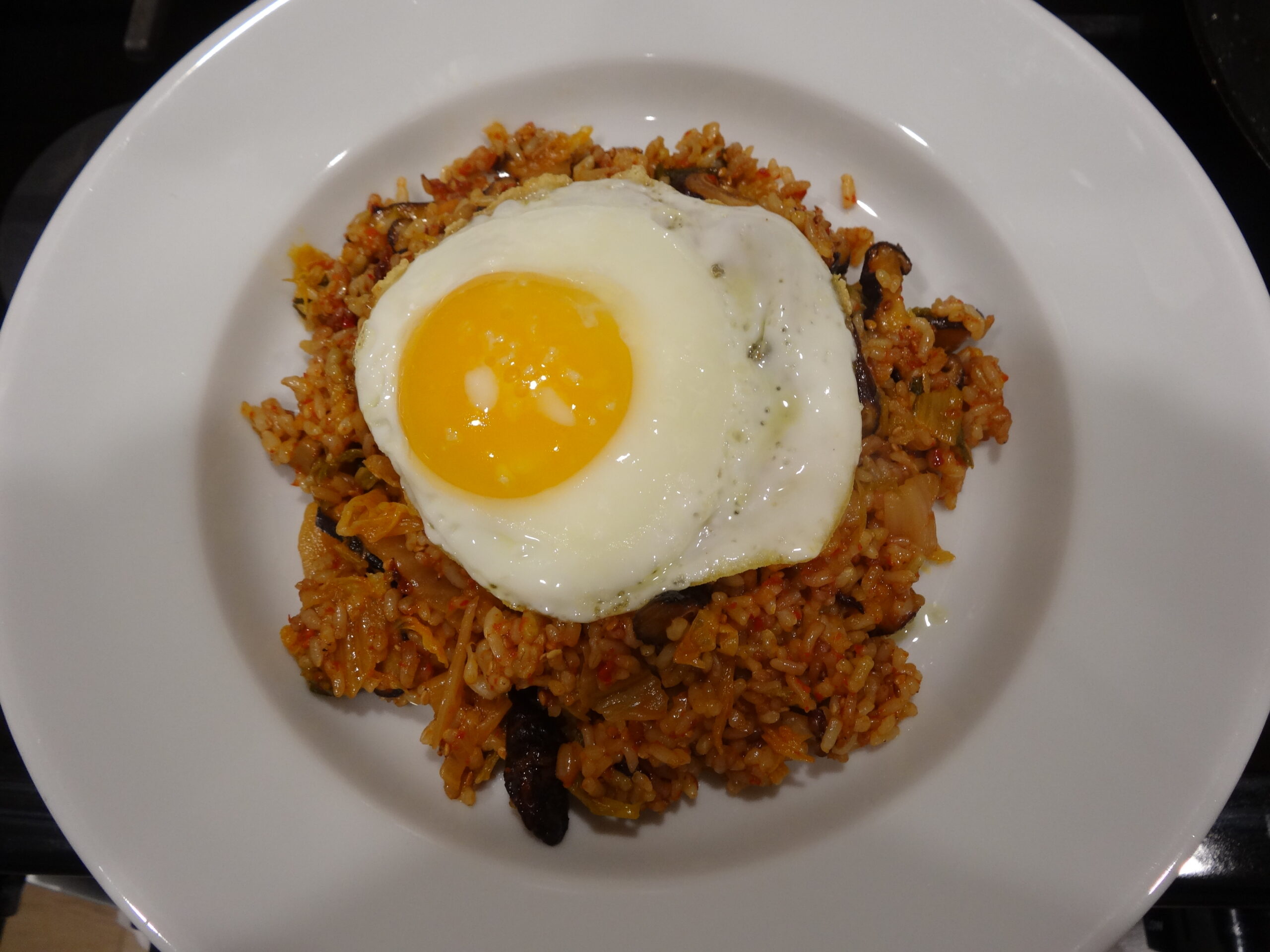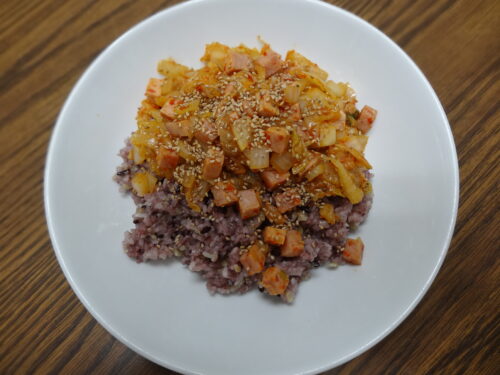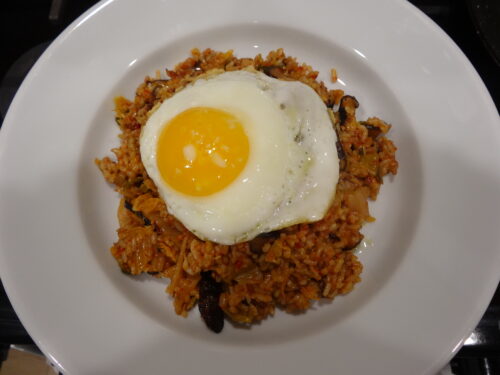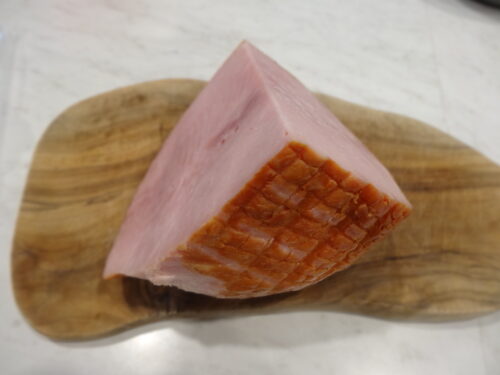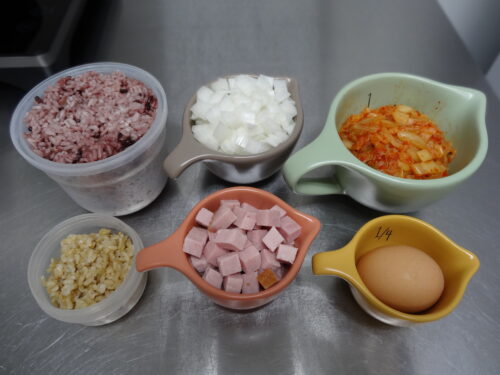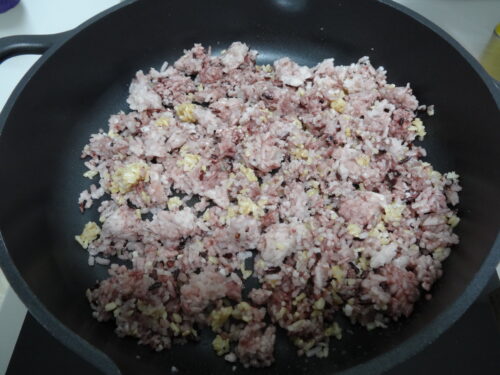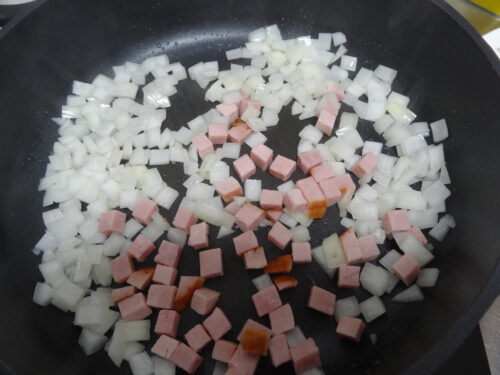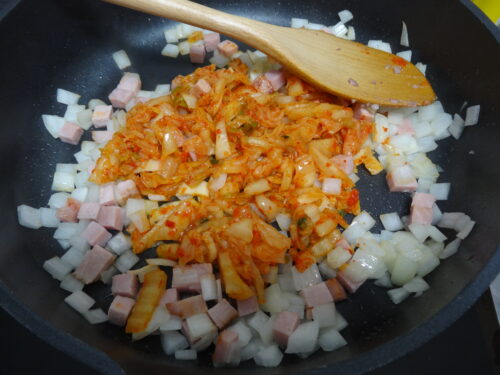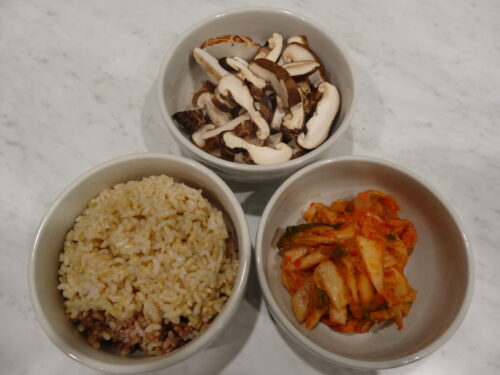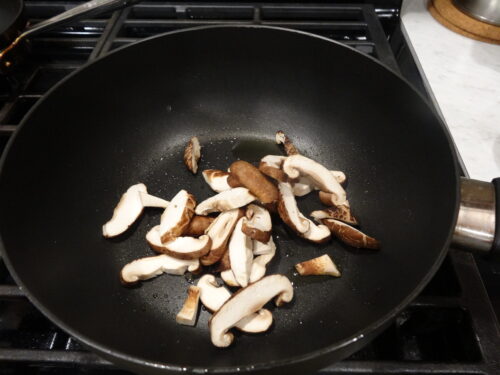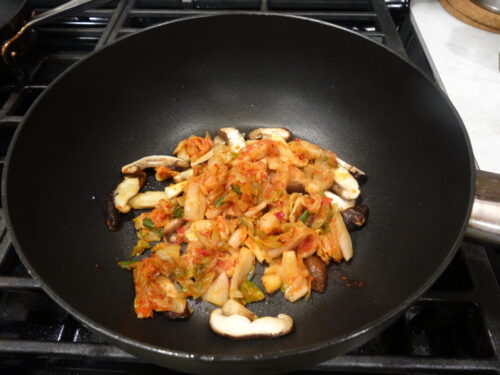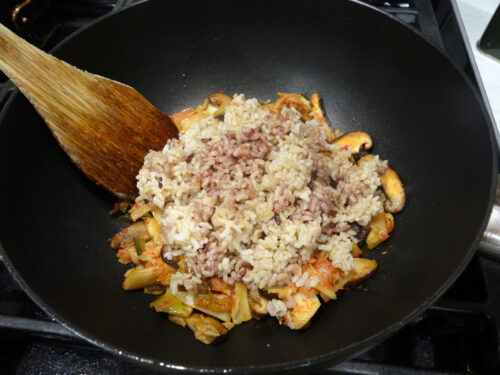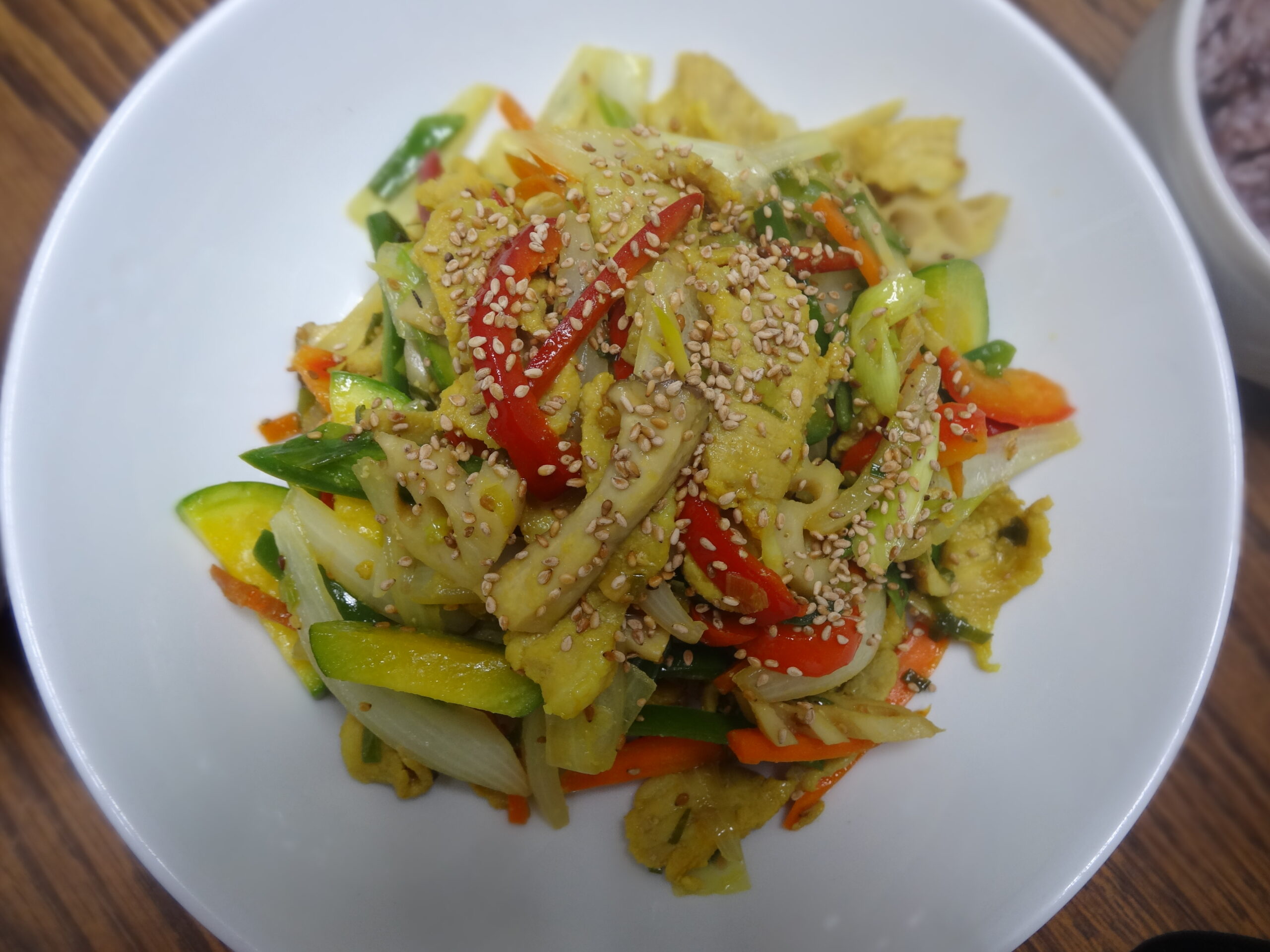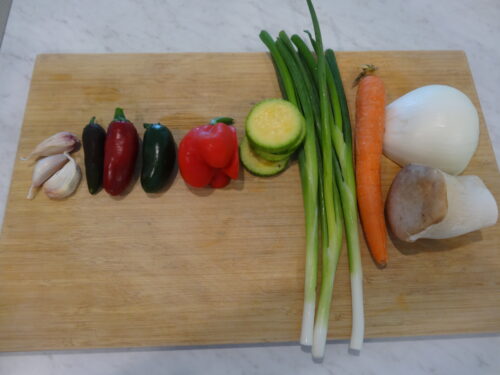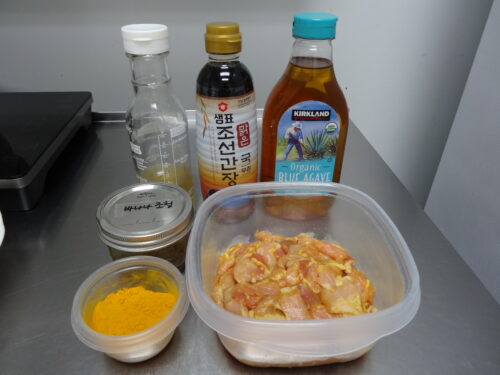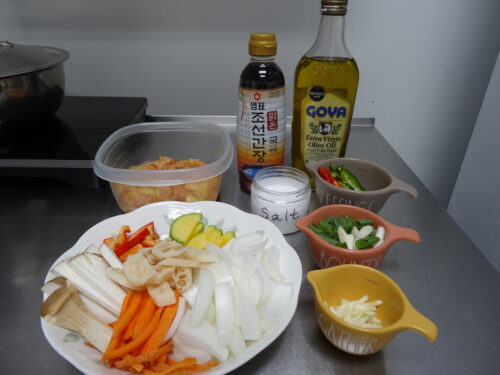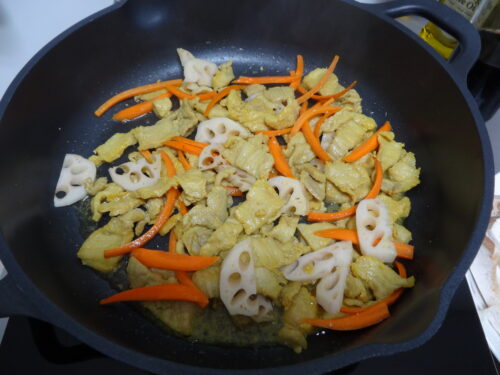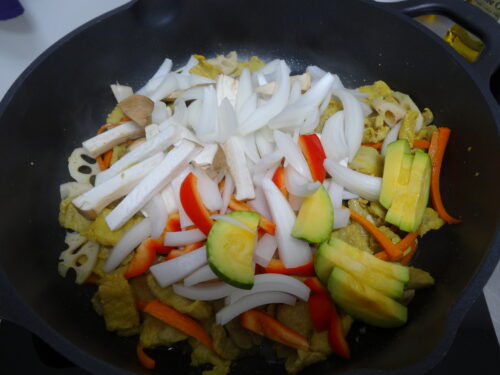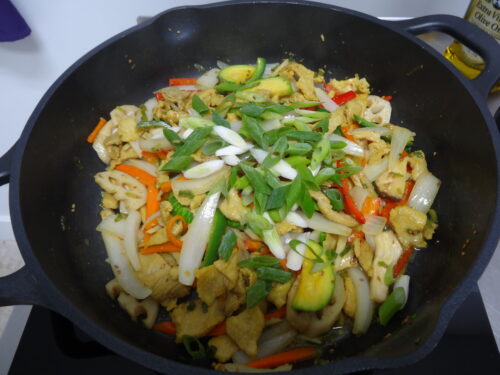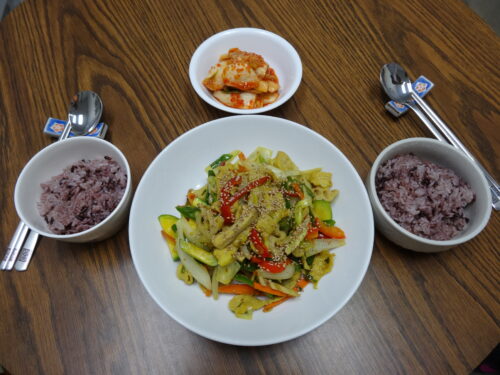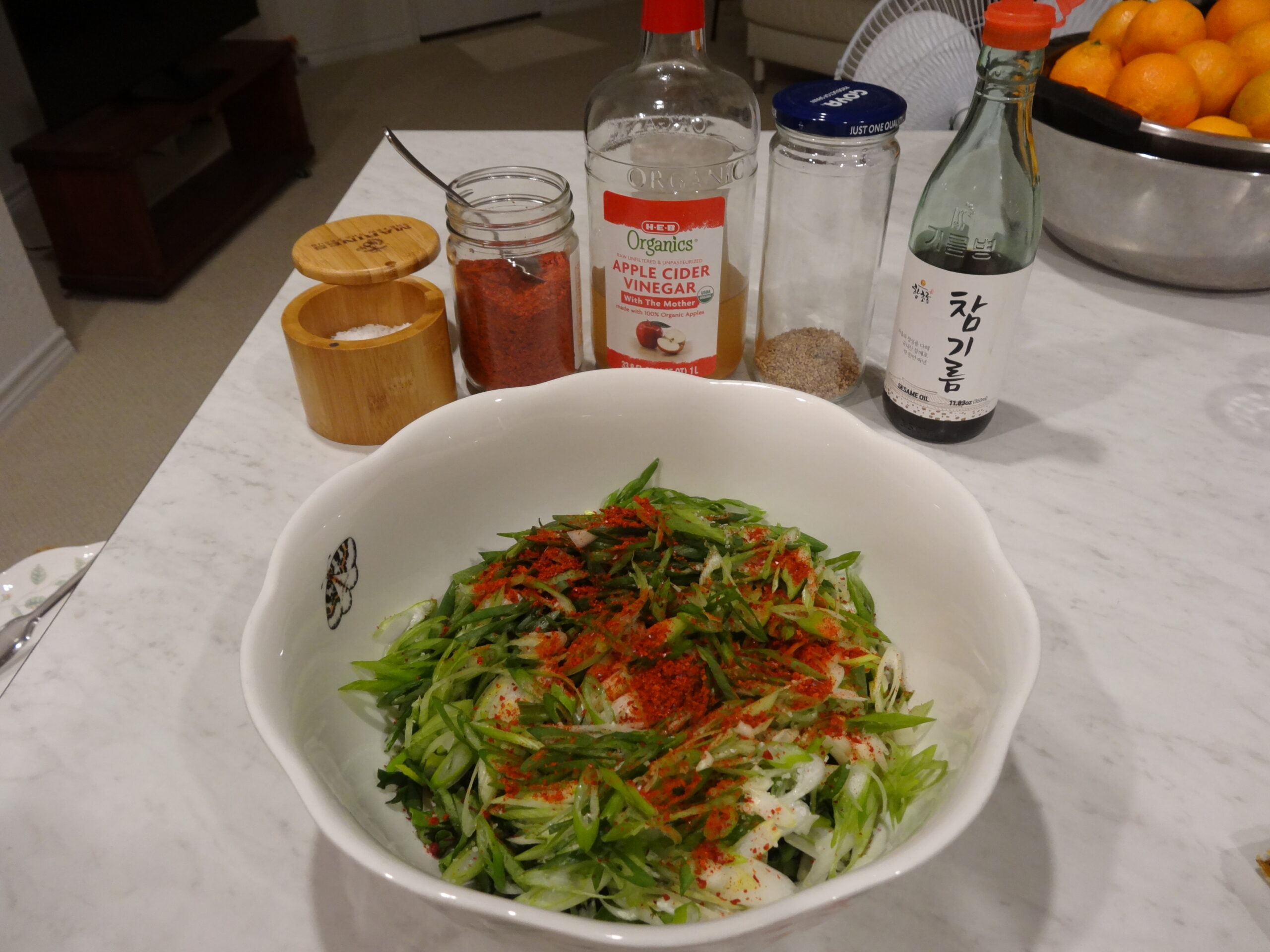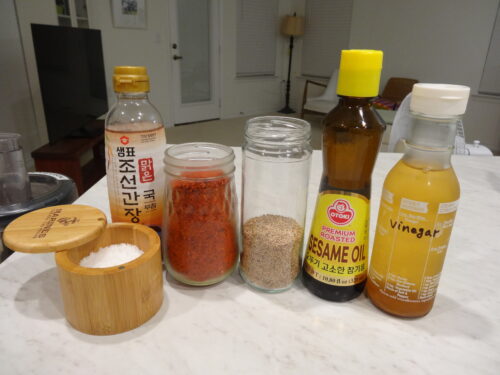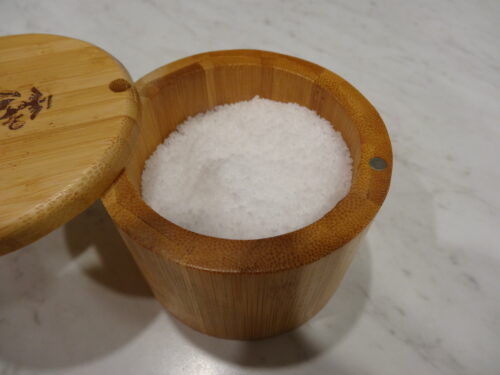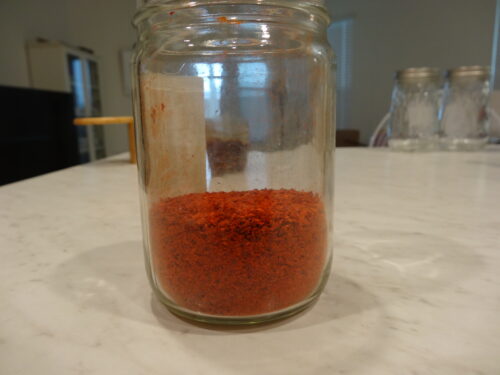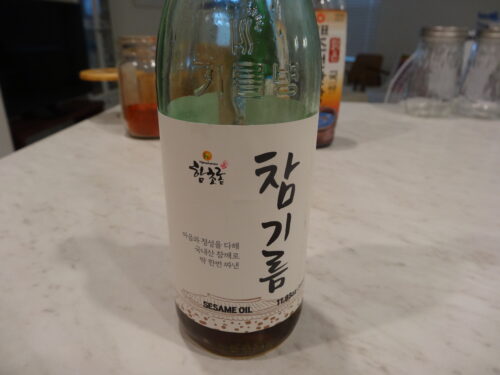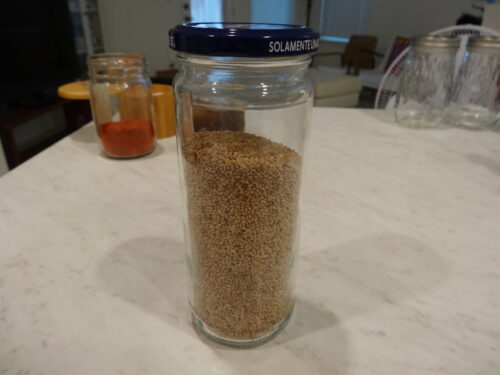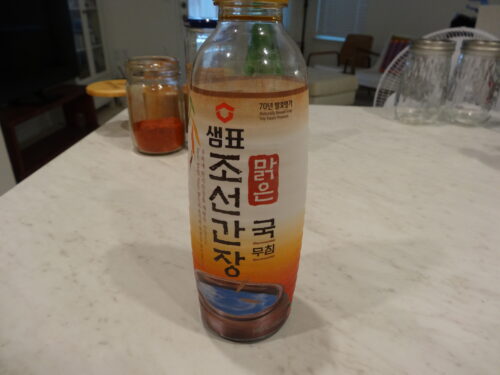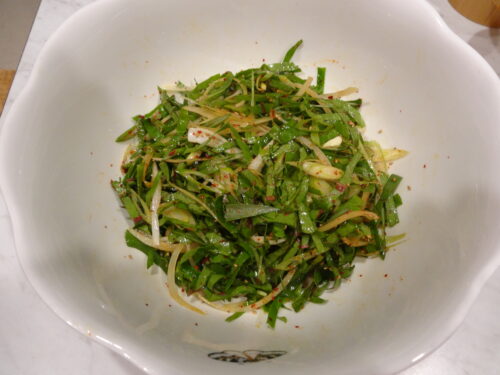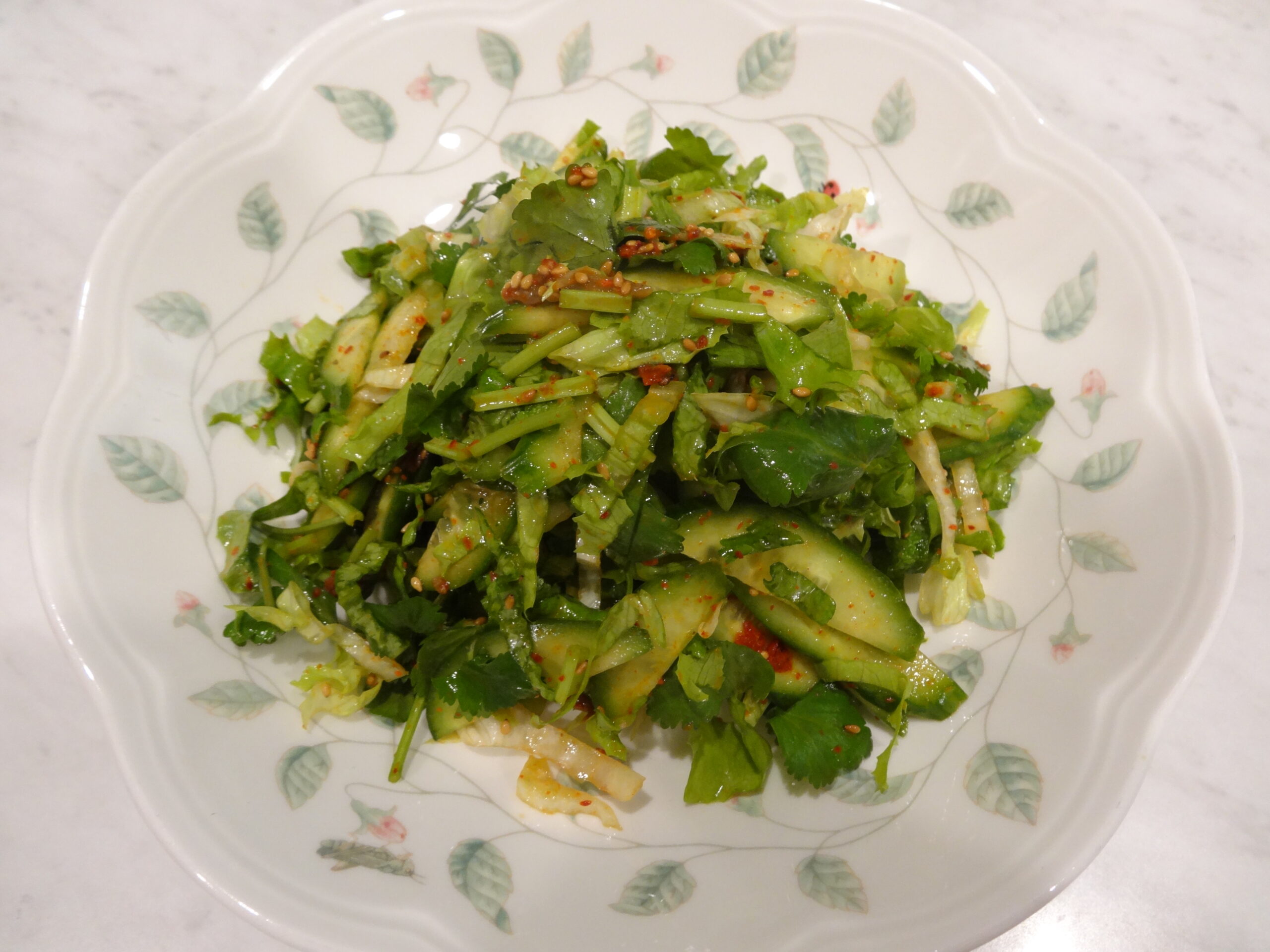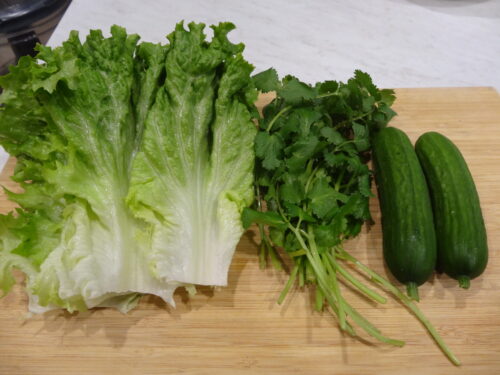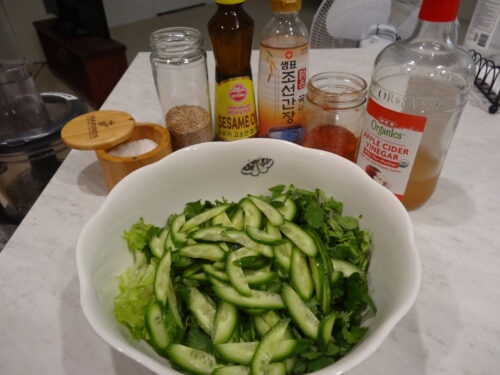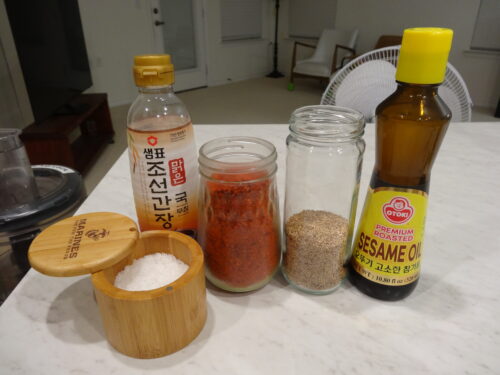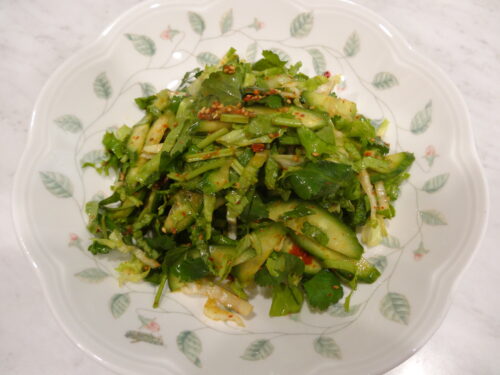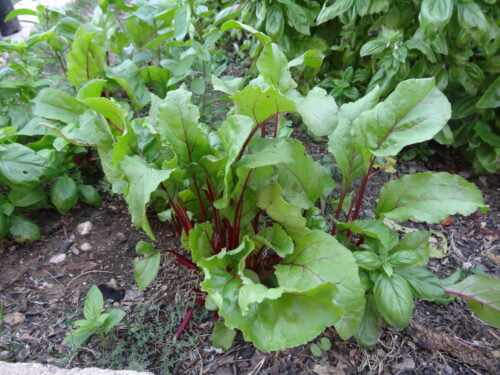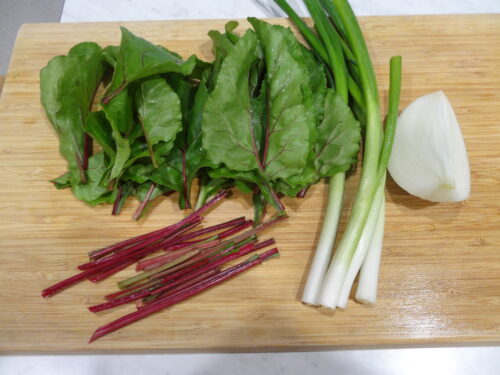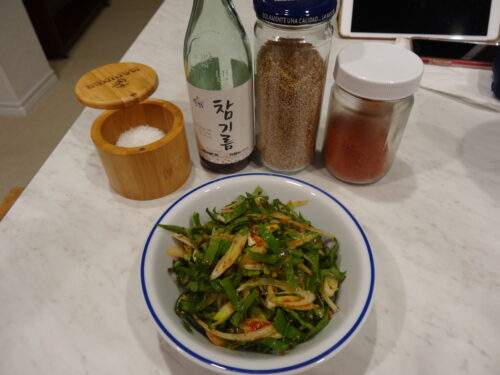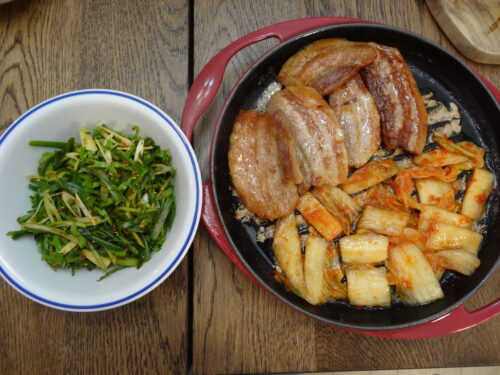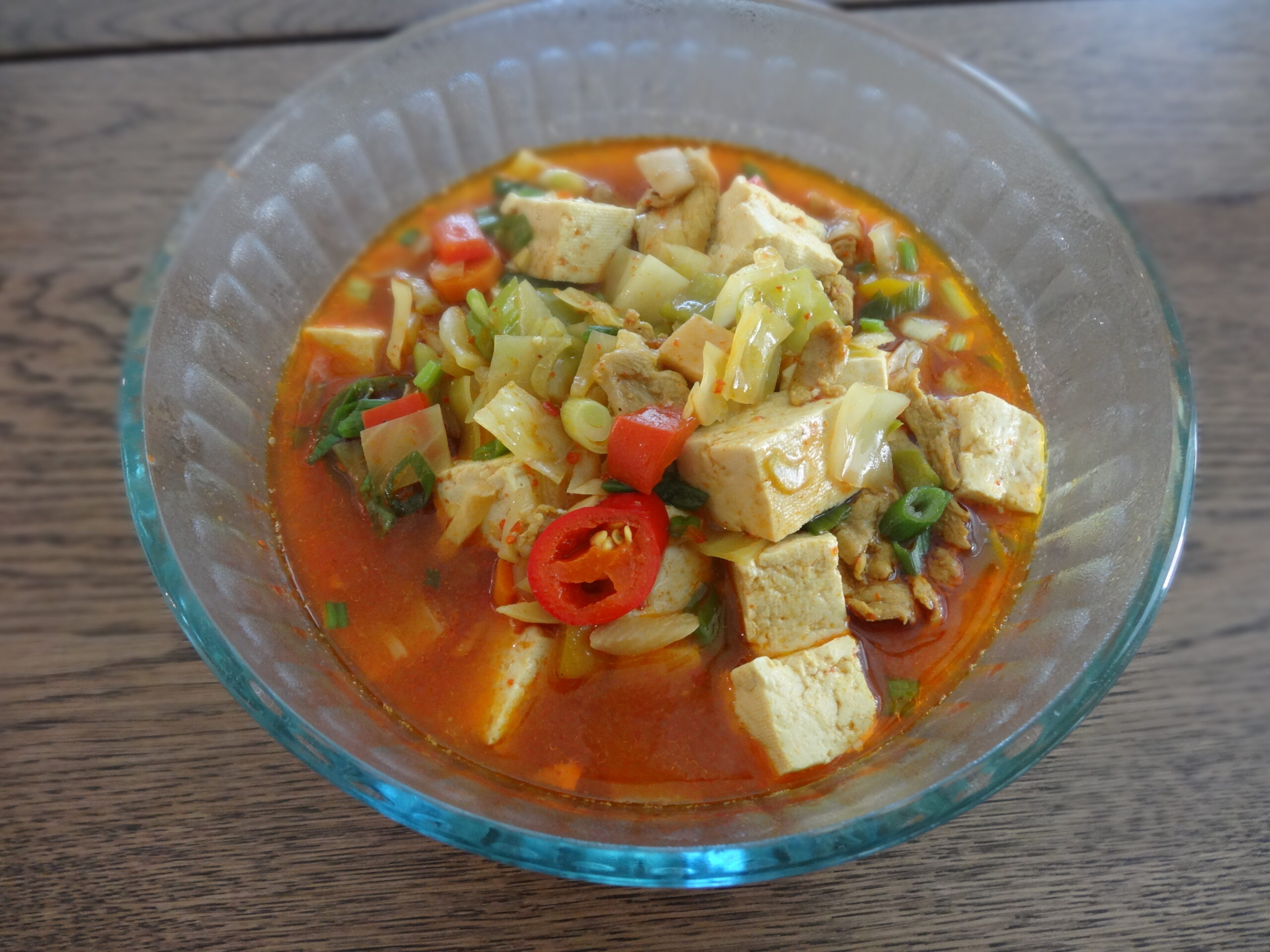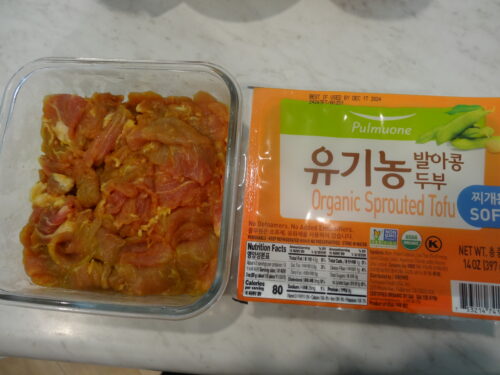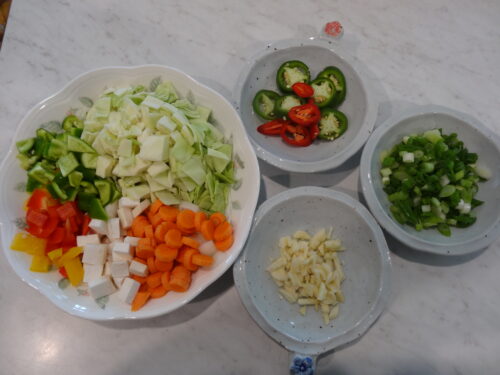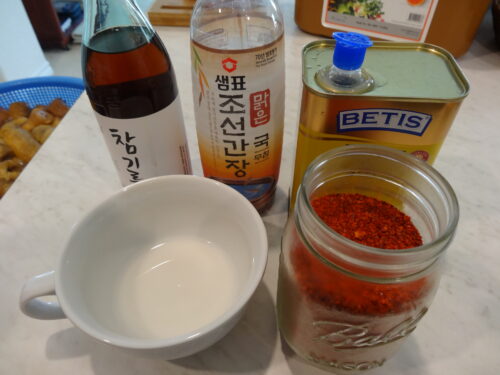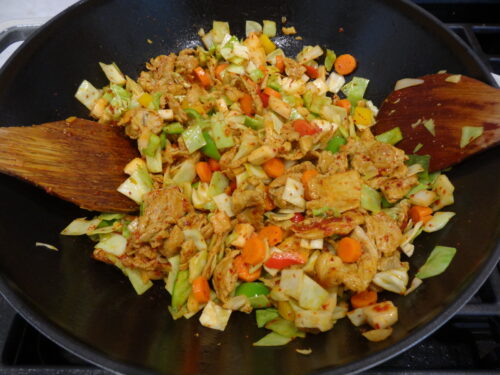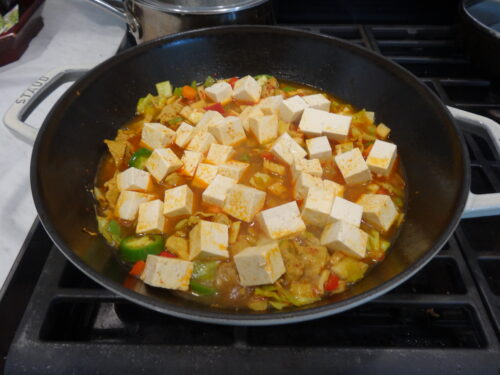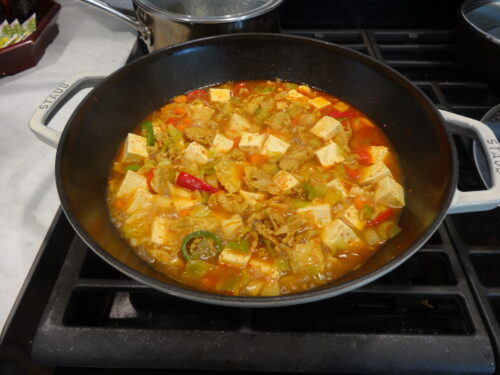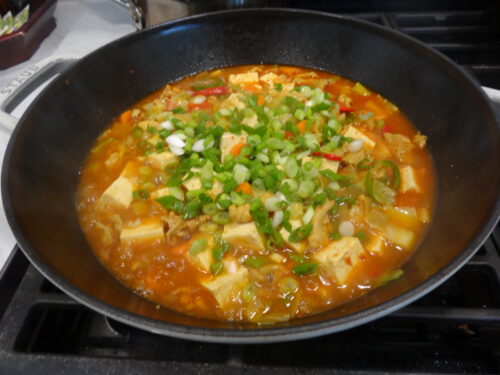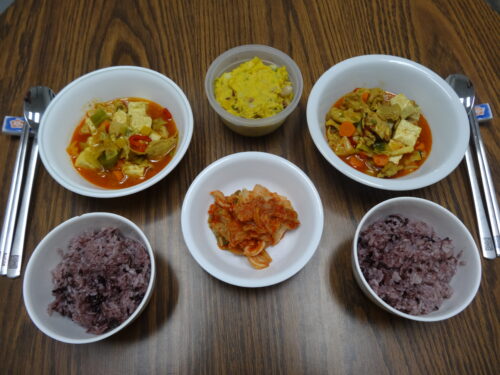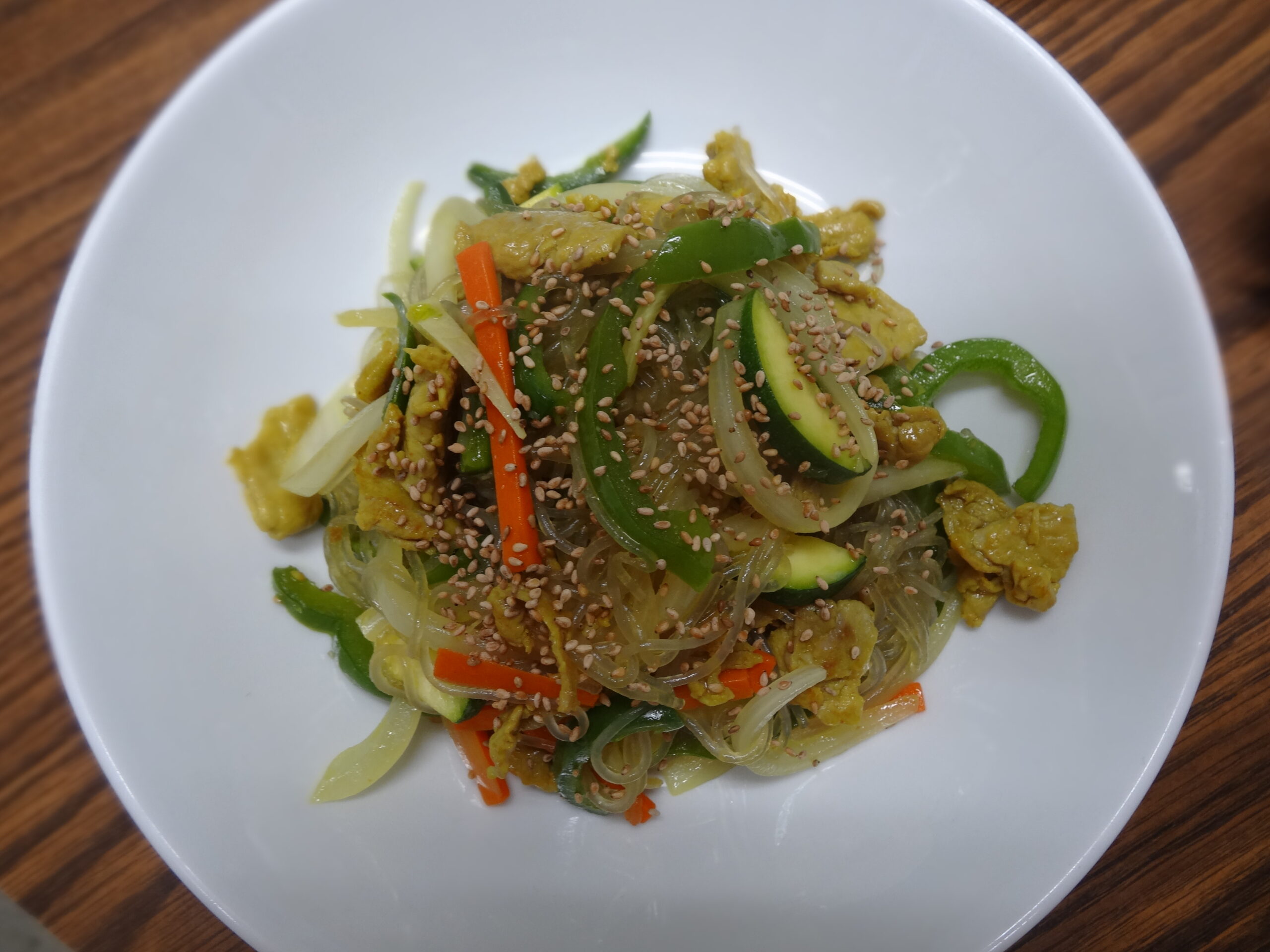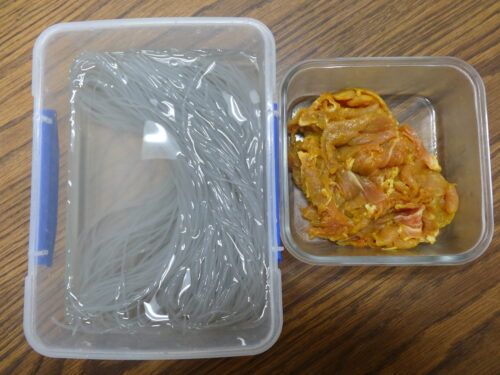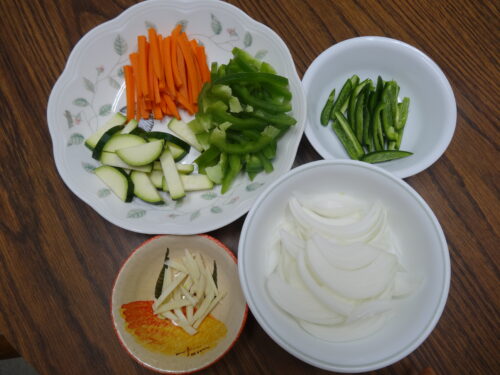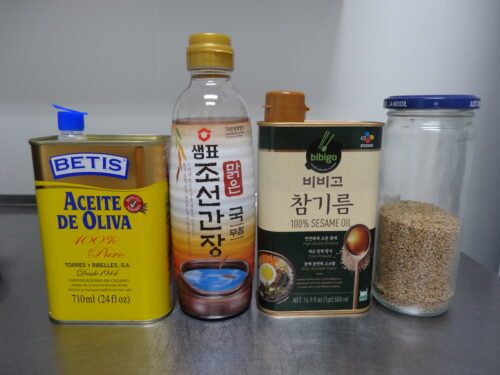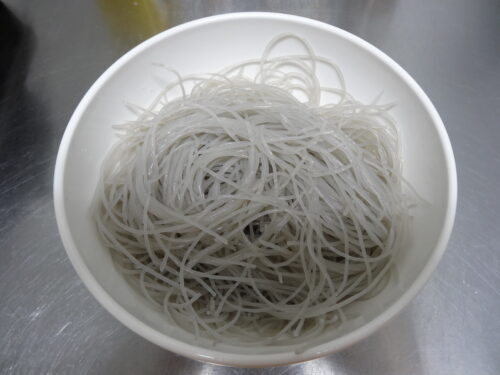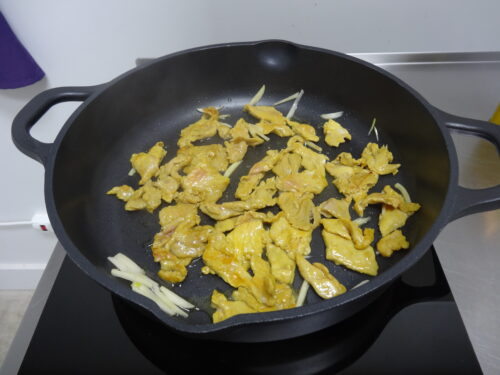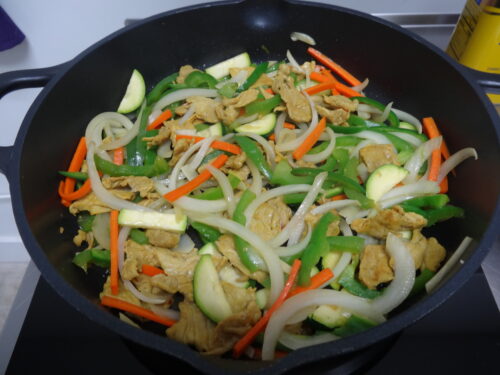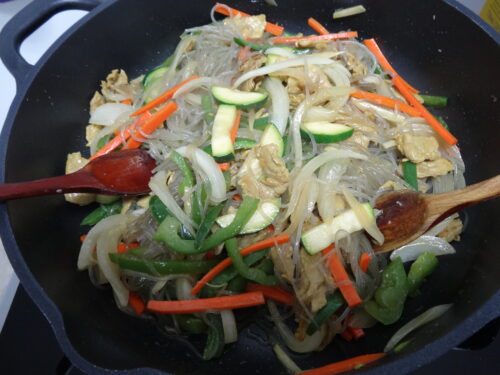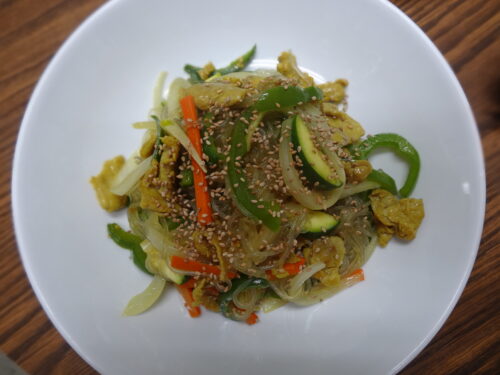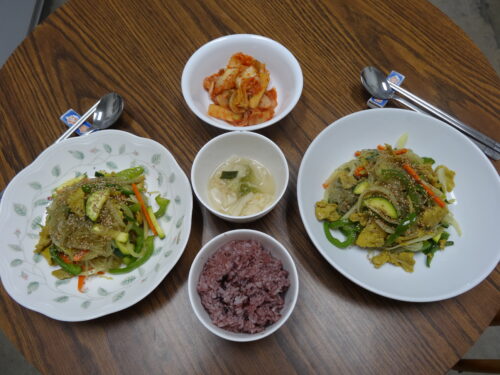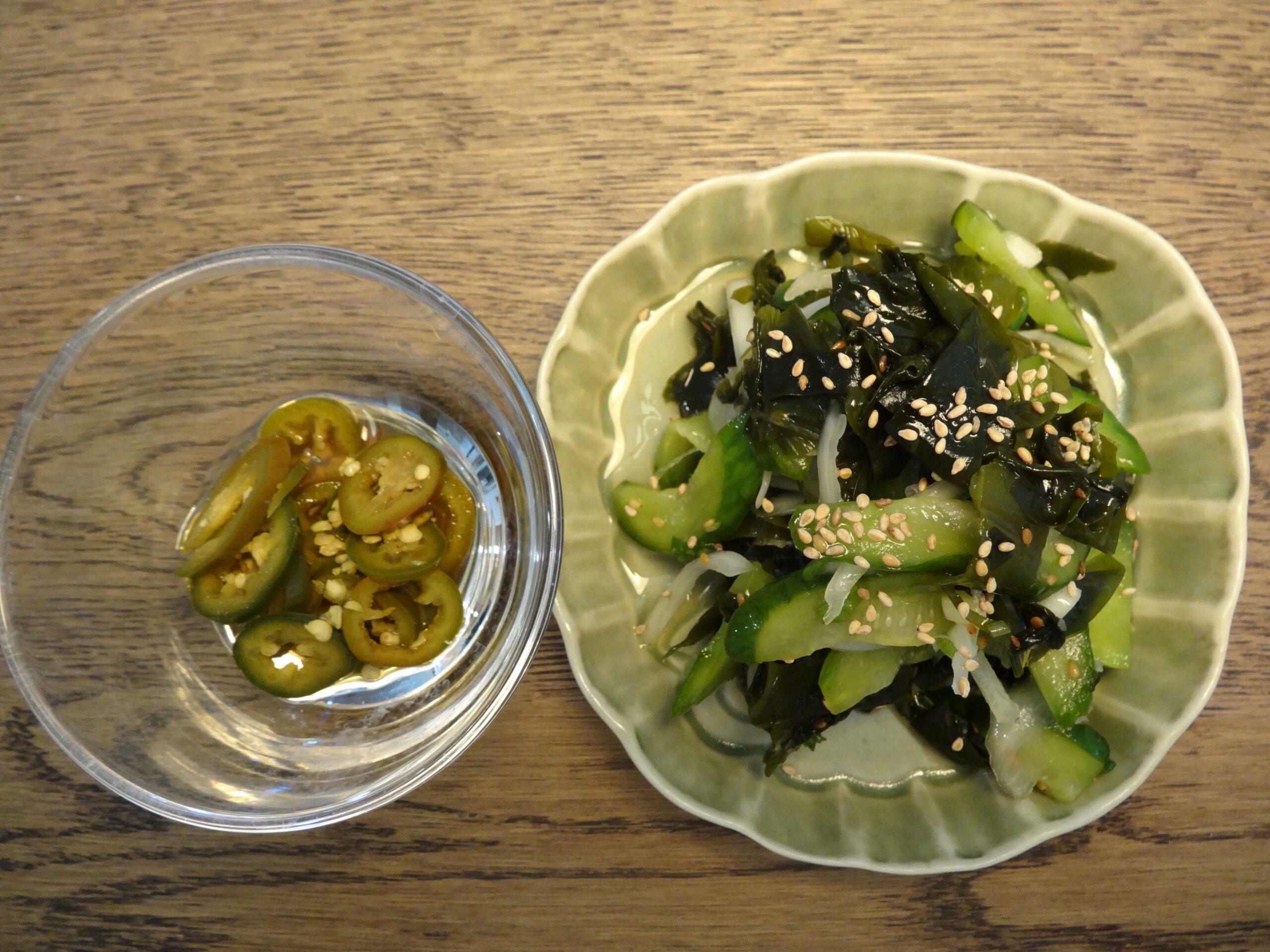
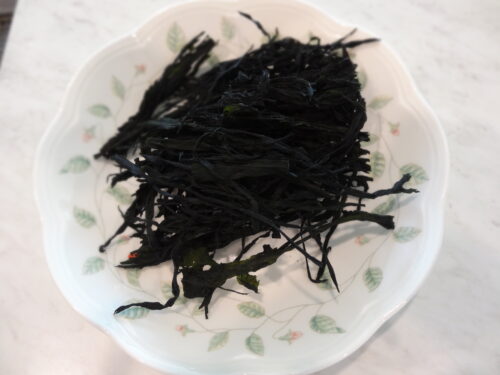
- 30g of dried seaweed (after soaking, it turned out to be a huge amount — 15g would have been plenty)
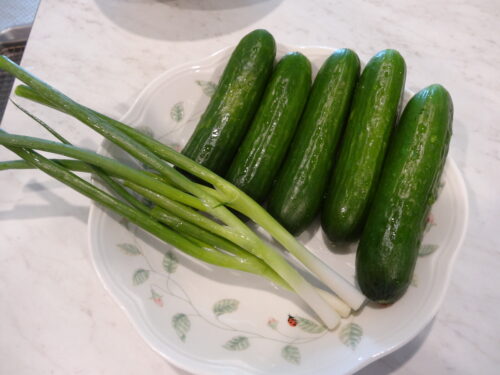
- 5 small cucumbers
- 1 medium onion
- Three stalks of green onions
- Since there’s a lot of seaweed, you’ll need plenty of cucumbers too.
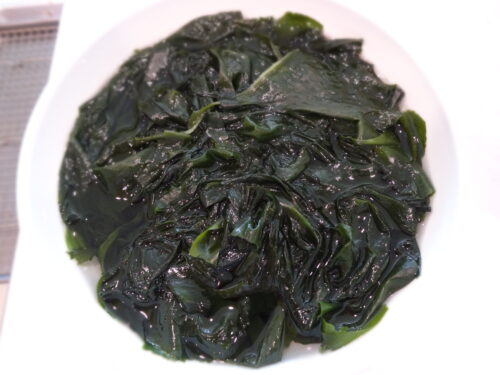
- Soak the dried seaweed for at least 15 minutes.
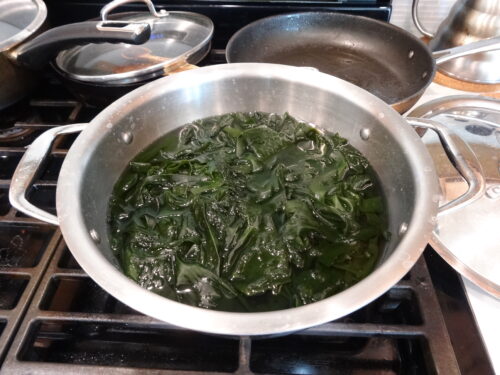
- Stir 2–3 times and turn off the heat after 30 seconds.
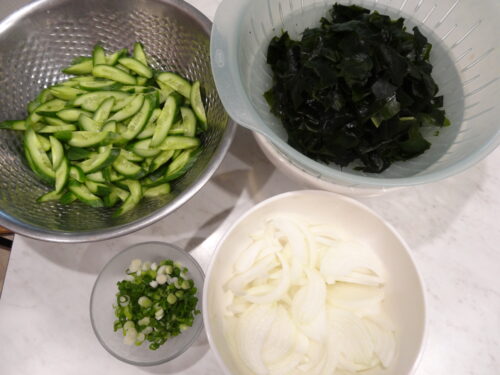
- Squeeze out the excess water from the blanched seaweed by hand, then cut it into bite-sized pieces.
- Thinly slice the cucumber and onion, sprinkle with 2–3 pinches of salt, and let them sit for a few minutes to soften.
- Chop the green onions finely.
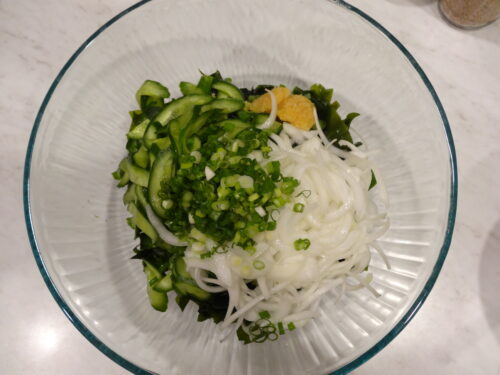
- Place all the ingredients in a large bowl, add the prepared seasoning (below), and mix well.
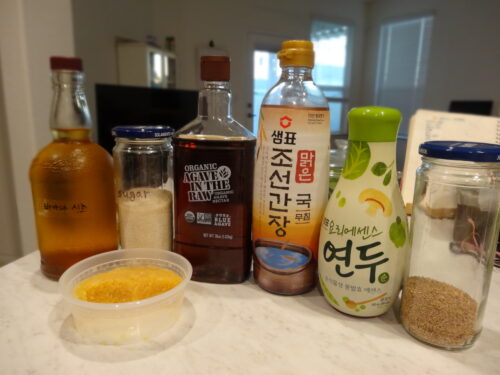
- The key to seaweed and cucumber salad is its sweet and tangy flavor.
- Season with 2T of Korean soy sauce and 2T of Yeondu (new product).
- If you don’t have Yeondu, use 4T of Korean soy sauce instead.
- Add 4 T of vinegar to give it a tangy flavor.
- Add 1T sugar and 1T agave syrup to give it a sweet flavor.
- Add 2T minced garlic for extra depth of flavor.
- Add 1T sesame seeds to give it a rich, nutty taste.
- It still tasted a bit under-seasoned, so I sprinkled in a few more pinches of salt and added 1 tablespoon of lemon juice for extra tanginess.
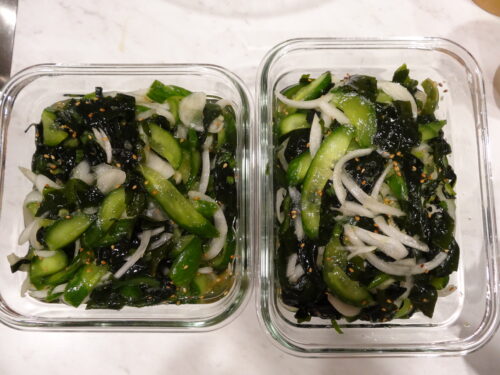
- I hadn’t made it for a long time, so I accidentally made double the amount.
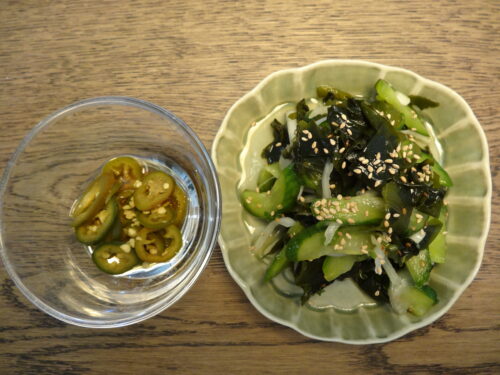
- Who knew sweet-and-sour seaweed and cucumber salad would go so well with spicy jalapeños?
- Recently, Haru and Evelyn came over, and since they wanted some seaweed and cucumber salad, I made it for them after a long time. Since Evelyn usually skips breakfast, I served her just the salad without rice. She felt something was missing in terms of spiciness, so I brought out some soy-marinated jalapeños. She really liked it and ate it all. Even I thought the combination worked quite well. I wouldn’t have thought of that idea myself because I don’t usually enjoy sharp, spicy flavors. My husband, on the other hand, likes spicy food and often comes up with these kinds of ideas. It seems this only works because we have different tastes. For those who aren’t used to the slippery texture of seaweed, pairing it with something spicy like jalapeños can make it much more enjoyable. Seaweed is an incredibly healthy ingredient, packed with minerals, vitamins, and dietary fiber. On cold days, having a warm bowl of seaweed soup feels like it gives my body everything it needs.Since the hot weather is starting to pass, I should make some seaweed soup soon and post it on the website.
